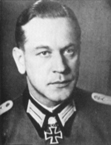HansBolter
Posts: 7704
Joined: 7/6/2006
From: United States
Status: offline

|
quote:
ORIGINAL: Lokasenna
quote:
ORIGINAL: HansBolter
quote:
ORIGINAL: jagsdomain
quote:
ORIGINAL: HansBolter
What I have not yet seen anyone state is that CAP has a default range of 3 hexes unless you restrict the range of the unit as some one above suggested by setting it to zero.
With range set to zero it will fly CAP only over its own base. With range set to whatever is normal for the unit, it will fly CAP three hexes out from its base.
To get any CAP over a hex at a range of 4 hexes the units have to be set to LRCAP, or Long Range CAP. They will only fly over the target hex or Task Force.
LRCP has diminishing return they further away the target hex is from the squadron base hex.
No squadrons at Rangoon flying CAP will ever cover anything 4 hexes from Rangoon.
Really? Even if you have it set to 6 which is the range.
I thought long range would be beyond the 6 hex limit.
No matter what the range of the fighter is, and some later war Allied fighters have considerable normal range, CAP is hard coded for a maximum range of three hexes.
BBfanboy provided a good explanation of why.
This is why the game has the LRCAP function for providing air cover at ranges beyond normal CAP range.
Do you have a citation on the hard-coded limit? Because that's not my experience. You can have CAP set to a range of 4, 5, 6, etc., and they will react to those hexes. They just won't be very effective.
I think the OP needed to set LRCAP, not CAP. That's where his problem lay.
From the Manual:
7.4.1 COMBAT AIR PATROL (CAP) When enemy aircraft are spotted by those aircraft that are airborne or by radar or ground forces assigned to watch for enemy aircraft, all planes available for CAP are scrambled. CAP Aircraft are assigned, but they do not all fly at the same time. They are divided into varying levels of readiness in order to maintain a standing CAP over an assigned target hex. There are three levels of CAP. Airborne CAP is the most prepared, and can be considered that portion of a group of Aircraft Assigned to CAP that are currently flying at the assigned altitude. There is no delay in this portion of the CAP being in position to intercept an incoming raid. Ground CAP, is the next level of readiness in the CAP hierarchy. This portion is considered to be on deck to rearm/refuel, or waiting to relieve the Airborne CAP in a ready status. There is little delay in this portion of the CAP Fighters to being airborne and in a position to intercept an incoming raid. Available CAP is any ready Fighter that is assigned some mission other than “Rest” and can be scrambled in extremis. There is a significant delay in this groups scramble and may be manifested in the Available CAP only being able to intercept a raid AFTER it has struck it’s target. This is the POST TARGET Intercept phase. CAP may react to defend a target as far as 2 hexes away. To do so, the hex to be defended must be attacked by more aircraft then are defending the hex, and the hex the CAP is going to come from must be under attack by less aircraft than are currently flying CAP over that hex (checked for each air unit, one at a time). The CAP that is going to fly out of their hex must have an extended range that would reach the hex to be defended (but no more than 2 hexes away). Also, in order for this extra coverage to happen, the attack must be detected by radar in time to allow for the CAP to reach the target (an intercept is allowed 33% of the time even when there is no radar). The exact number of aircraft that will cover outside their hex is dependent on how good the radar detection is on the incoming strike.
I seem to recall that the two hex range was increased to three hexes at some point, but am too lazy to invest effort in searching for corroboration just to make a point.
_____________________________
Hans
|
 Printable Version
Printable Version







 New Messages
New Messages No New Messages
No New Messages Hot Topic w/ New Messages
Hot Topic w/ New Messages Hot Topic w/o New Messages
Hot Topic w/o New Messages Locked w/ New Messages
Locked w/ New Messages Locked w/o New Messages
Locked w/o New Messages Post New Thread
Post New Thread